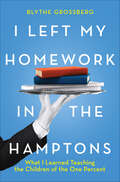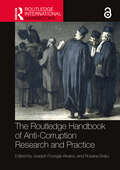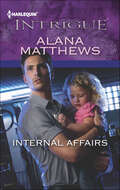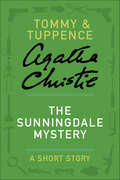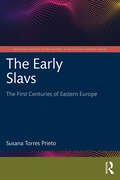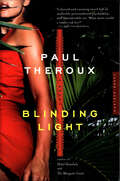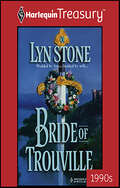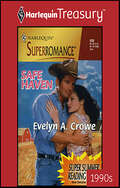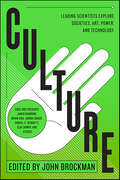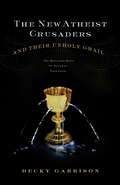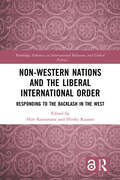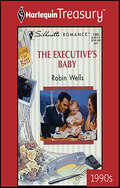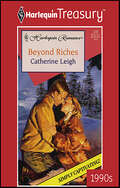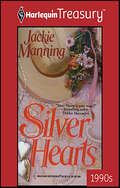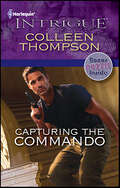- Table View
- List View
I Left My Homework in the Hamptons: What I Learned Teaching the Children of the One Percent
by Blythe GrossbergA captivating memoir about tutoring for Manhattan’s elite, revealing how a life of extreme wealth both helps and harms the children of the one percent.Ben orders daily room service while living in a five-star hotel. Olivia collects luxury brand sneakers worn by celebrities. Dakota jets off to Rome when she needs to avoid drama at school.Welcome to the inner circle of New York’s richest families, where academia is an obsession, wealth does nothing to soothe status anxiety and parents will try just about anything to gain a competitive edge in the college admissions rat race.When Blythe Grossberg first started as a tutor and learning specialist, she had no idea what awaited her inside the high-end apartments of Fifth Avenue. Children are expected to be as efficient and driven as CEOs, starting their days with 5:00 a.m. squash practice and ending them with late-night tutoring sessions. Meanwhile, their powerful parents will do anything to secure one of the precious few spots at the Ivy Leagues, whatever the cost to them or their kids.Through stories of the children she tutors that are both funny and shocking, Grossberg shows us the privileged world of America’s wealthiest families and the systems in place that help them stay on top.
Second Homes and Climate Change (Contemporary Geographies of Leisure, Tourism and Mobility)
by C. Michael Hall Bailey Ashton AdieThis book is the first to address the important interrelationship between second homes and climate change, which has become an increasingly relevant issue for many regions around the world. Second homes are often a key source of tourist visitation as well as economic benefit for their host communities. The chapters provide an array of international case studies and climate change impacts, including the changing biocultural landscapes in Italy, hazard risks in the mountains of Poland, and the shifting media discussion on second homes and climate change in Finland. Topics covered focus on issues around planning and governance in second home locations, adaptation and mitigation measures implemented by second home owners, and the influence of second home owners’ place attachment in relation to second home impacts. It introduces the overall topic of second homes and climate change while also laying the groundwork for future work in this burgeoning area of research. This book will be of significant interest to upper-level undergraduates, graduate students, and academics in the fields of geography, tourism, planning, housing studies, regional development, environmental management, and disaster management. It would also be of use for professionals who engage with second home communities, particularly planners, government officials, and environmental officers.
The Routledge Handbook of Anti-Corruption Research and Practice (Routledge International Handbooks)
by Roxana Bratu Joseph Pozsgai-AlvarezThe Routledge Handbook of Anti-Corruption Research and Practice takes a multidisciplinary and multidimensional approach to provide a comprehensive exploration of the processes, conditions, and activities that hold the potential to control corruption.Building on existing knowledge gathered from a variety of social science sources, it strives to provide analytical emancipation of, and coherence to, anti-corruption studies. Anti-corruption transcends the traditional boundaries of state actors, involving individual and organizational business actors, civil society groups, members of the media, accounting, and legal professions, as well as sports associations and other non-traditional actors. This handbook adopts a holistic approach to reflect the rich nature of the manifestations of anti-corruption – past and present – and the possible shapes it may still take in the future.This handbook is a key reference for scholars, students and practitioners engaged in the study and practice of anti-corruption, corruption, democracy, public administration, comparative politics, as well as more broadly to the wider social sciences.
Over You
by Nicola Kraus Emma McLaughlinThe authors of the bestselling novel The Nanny Diaries, Emma McLaughlin and Nicola Kraus, bring you the story of a girl who gets her heart broken…and figures out a foolproof way to get over her ex. Over You’s Max Scott had a hard time getting over Hugo, the boy who dumped her. Now it’s Max’s mission to help NYC girls get over their broken hearts fast, and with dignity. Now Max’s life is better than she ever imagined it could be. Her new business, Ex, Inc., is booming. Better still, her friendship with Ben, a truly sweet guy, could turn romantic. But when Hugo reenters the picture, Max realizes that she isn’t over him. At all.Funny, touching, and romantic, Over You is the kind of book every girl will fall head over heels for.
Internal Affairs
by Alana MatthewsWhen the call came in over the radio, Sheriff's Deputy Rafe Franco thought he would be responding to a typical domestic dispute. But he didn't know that the perp was St. Louis's most notorious mobster-or that the victim was his college sweetheart, Lisa Tobin.Now, as Rafe is drawn into a web of crime and danger, he discovers that his feelings for Lisa are stronger than ever. And her three-year-old daughter, Chloe, is melting his heart in ways he'd never imagined possible. But Lisa's ex is a powerful sociopath who will stop at nothing to get her back-or destroy her. As Rafe's instincts as a man battle with his duty as a cop, he'll do anything to ensure their survival...and their future as a family.
Will Your Prodigal Come Home?: An Honest Discussion of Struggle & Hope
by Jeff LucasIf you have had your heart broken by a prodigal, you know the pain of being hurt or disappointed by a loved one … and the utter despair of seeing them turn away from Christ and the cross. In Will Your Prodigal Come Home? author Jeff Lucas delivers a message that is both challenging and comforting as he outlines the chaotic situations and emotions that families of prodigals face.Lucas acknowledges that every prodigal is different. Some have defied God. Some are lured by drugs, alcohol, or crime. Others have drifted until the emotional and physical distance feels unbearable. Still others are in church pews, with hearts closed to Jesus. Clearly, there are no easy answers. But through understanding, insight into the emotions that form within families, and an acknowledgement of the power of prayer, this book outlines a solid approach to help guide your prodigal home and help you keep your own faith as you wait.
The Sunningdale Mystery: A Short Story (Tommy & Tuppence Short Stories)
by Agatha ChristiePreviously published in the print anthology Partners in Crime.Captain Sessle is found stabbed through the heart with a hatpin, and the only clue is a bit of red wool in his hand. A pretty blonde is charged because she was wearing a bright red wool coat, but the Beresfords aren’t so sure. Was there more behind the killing than a cute girl and some red yarn?
Starting with June
by Emilie RoseResisting June may be his toughest job Investigating small-town police corruption has never been on former Marine Sam Rivers's radar. Still, taking this assignment gives him the opportunity to figure out what's next after his medical discharge. The task should be a straightforward one. That is, until he meets Deputy June Jones. Almost instantly the warm, sexy woman occupies his thoughts. For a man who craves solitude, suddenly he can't get enough of her. He also can't forget his reason for being in Quincey, North Carolina. As his investigation progresses, it threatens his secret relationship with June. But can he turn his back on all the love and hope she offers?
Last Chance Books
by Kelsey RodkeyYou’ve Got Mail meets Morgan Matson in this smart, banter-filled romcom with a bookish twist.Nothing will stop Madeline Moore from taking over her family’s independent bookstore after college. Nothing, that is—until a chain bookstore called Prologue opens across the street and threatens to shut them down.Madeline sets out to demolish the competition, but the guy who works over at Prologue seems intent on ruining her life. Not only is he taking her customers, he has the unbelievable audacity to be… extremely cute.But that doesn’t matter. Jasper is the enemy and he will be destroyed. After all—all’s fair in love and (book) war.
Deep Sleep (Helen West Mysteries)
by Frances FyfieldThis gripping psychological maze is perfect for fans of Ruth Rendell and P. D. James.Pip Carlton is a devoted husband and a highly respected pharmacist, cherished by his loyal customers. When his wife dies in her sleep, with no apparent cause, he is distraught. Comforted by his caring assistant, Pip ignores the rumors about Margaret’s death, relieved that the police seem to have moved on. But prosecutor Helen West refuses to believe that Margaret simply slipped into her final slumber. As she probes deeper into the affairs of the neighborhood, she uncovers a viper’s nest of twisted passion, jealous rage, and lethal addictions. Then a sudden act of violence erupts, shaking the community, and one lone man, armed with strange love potions, prepares to murder again …
The Early Slavs: The First Centuries of Eastern Europe (Routledge Studies in the History of Russia and Eastern Europe)
by Susana Torres PrietoThis book presents an introductory and comprehensive history of the Slavic-speaking peoples who inhabited Eastern and Southern Europe during the 700-year period stretching from the first archaeological and historical records to the establishment of their first organised polities.The book is organised thematically (social organisation, politics and government, economy, religion, culture) in order to present some of the most recent scholarly advances in a range of fields, showing new light in some historical scholarly polemics. It is a political and cultural history that incorporates recent findings in areas previously overlooked in scholarly literature, such as slavery, the role of women, the importance of Jewish communities, and the problematic relations of all these emerging polities with neighbouring empires. Instead of focusing exclusively on any specific geographic area, or dealing mainly with linguistic and cultural aspects, the book provides a much-needed overview of the origins of many modern nations in Eastern and Southern Europe.Written in an accessible style and complete with a comparative chronology, this is a comprehensive introduction to students and researchers in the fields of history, philology, and Slavic and East European Studies.
Where the Heart Lies
by Michelle Garren FlyeAll widowed Alicia Galloway has left of her war-hero husband are the flag that draped his coffin and his final wishes: to move to his hometown, take over the family bookstore and enjoy a simple, quiet life with their two small children. When she arrives, her husband's best friend makes that new life anything but simple. How can she be so drawn to Liam Addison?Liam only intended to help Alicia get settled. But one unexpected kiss awakens his long-held forbidden feelings. Soon, the town busybodies swoop in to warn Alicia away from him. Because no matter the man he's become, he'll never live down his reputation as town troublemaker and wolfish womanizer.No one wants the war hero's sweet widow and the supposedly former bad boy together. But the more everyone tries to keep them apart, the closer he and Alicia get. And the more determined Liam is to prove he's a changed man. Will it be enough to convince Alicia to let a new love in her life?87,000 words
Blinding Light: A Novel
by Paul TherouxSlade Steadman's lone opus, published twenty years ago, was Trespassing, a cult classic about his travels through dozens of countries without benefit of passport. With his soon-to-be-ex-girlfriend Ava in tow, Steadman sets out for Ecuador’s jungle in search of a rare hallucinogenic drug and the cure for his writer’s block. Amid a gang of thrill-seeking tourists, he finds his drug and his inspiration but is beset with an unnerving side effect—periodic blindness. His world is altered profoundly: Ava stays by his side, he writes an erotic, autobiographical novel with the drug serving as muse, and he returns to stardom. Steadman becomes addicted to the drug and the insights it provides, only to have them desert him, along with his sight. Will he regain his vision? His visions? Or will he forgo the world of his imagining and his ambition? As Theroux leads us toward the answers, he makes fresh magic out of the venerable intertwined themes of sight and insight. He also offers incisive, sometimes hilarious takes on the manifold ironies of travel, of trespass and trangession, and of the trappings of the writer’s life—from the fear of the blank page to the unexpected challenges of the book tour.
Make My Wish Come True
by Fiona HarperFamily-oriented Juliet is a Christmas-dinner cook extraordinaire and is trying to keep it together in the wake of her marriage breakdown two Christmases ago, but the cracks are beginning to show.Her bright and vivacious sister Gemma was always the favorite daughter. Gemma has no qualms about escaping the festive madness and the pressures of her glamorous job by jetting off somewhere warm and leaving Christmas in Juliet's capable hands.When Gemma shirks responsibility one too many times and announces she's off to the Caribbean (again!), Juliet finally snaps. Gemma offers her sister the perfect solution-to swap Christmases. She'll stay home and cook the turkey (how hard can it be?) and Juliet can fly off into the sun and have a restorative break.In the midst of all the chaos, there's Will, Juliet's dishy neighbor who's far too nice to float Gemma's boat and may secretly harbor feelings for her sister; and Marco, the suave Italian in the villa next door who has his own ideas about the best way to help Juliet unwind.Will the sisters abandon caution and make this a Christmas swap to remember?
Bride of Trouville
by Lyn StoneSHE WAS ALL HE HAD EVER WANTEDWhen Edouard Gillet, Comte de Trouville, wed the beauteous Lady Anne of Naincroft, he thought he had found his heart's desire. But was the passion he had willingly declared from the battlements shared by his newly pledged bride? Or would the unspoken secret still between them destroy their newfound happiness?Though it would break her heart, Anne prayed that Edouard would leave Scotland behind and return to the Court of France. For the longer he stayed, the greater the risk he would discover that her son was not all he seemed-and the mighty comte was surely not a man who could accept anything less than perfection.
The Key Ingredient: A Short Story
by Susan WiggsFrom #1 New York Times bestselling author Susan Wiggs comes a wonderful short story, and companion tale to her unforgettable novel Family TreeEvery great love story has a beginning. Annie Rush’s started at a food cart in a vibrant city park. Annie, then a film student, came across a ruggedly handsome, charismatic chef serving up gourmet street food to an ever-growing clientele lining up for his creations. Together, Annie and Martin Harlow conceived The Key Ingredient, a cooking show featuring Martin as the star while Annie handles production.As they travel to Annie’s Vermont hometown to film their pilot episode, she realizes that she might want to create more than television magic with Martin. But does he feel the same way? The weather is miserable, their shoot is a disaster, and the maple syrup just isn’t flowing. While Annie tries to cling to her vision for their show, she can’t help but wonder if she could be as unlucky in work as she is in love. Is she always destined to stay behind the scenes?Just as some recipes only come together at the last minute with the addition of a key ingredient, sometimes a single moment can change everything—turning Annie’s life into a cornucopia of good fortune, the feast of her dreams.
Safe Haven (Home on the Ranch)
by Evelyn A. CroweHOME ON THE RANCHNot so long ago, Avery Jensen had it all....A beautiful home. An interesting career. Family and friends. Power, money and even a fiancé. But that's in the past, in the life she lived before her brother framed her and she was sent to jail. Now all she has is herself. And the haven she's found on a ranch in Texas-Haven, Texas.No one in Haven knows the truth about her, and she wants to keep it that way. Her boss, rancher Logan Monahan, isn't about to pry-he has secrets, too. All he wants is to be left alone.But when "accidents" start to happen around the ranch, these two private people have to learn to trust each other and figure out which one of them is the target....
Culture: Leading Scientists Explore Civilizations, Art, Networks, Reputation, and the Online Revolution (Best of Edge Series)
by John Brockman"Theway Brockman interlaces essays about research on the frontiers of science withones on artistic vision, education, psychology and economics is sure to buzzany brain." —Chicago Sun-Times, on This Will Change EverythingLaunchinga hard-hitting new series from Edge.org and Harper Perennial, editor JohnBrockman delivers this cutting-edge master class covering everything you needto know about Culture. With original contributions by the world’sleading thinkers and scientists, including Jared Diamond, Daniel C. Dennett,Brian Eno, Jaron Lanier,Nicholas Christakis, and others, Culture offers a mind-expanding primeron a fundamental topic. Unparalleled in scope, depth, insight and quality, Edge.org’s Culture is not to be missed.
The New Atheist Crusaders and Their Unholy Grail: The Misguided Quest to Destroy Your Faith
by Becky GarrisonA challenge has been issued on matters of faith and Becky Garrison meets it head on in this witty yet poignant answer to the Anti-God gurus Richard Dawkins, Sam Harris, and Daniel Dennett. Becky Garrison, religious satirist and senior contributing editor for The Wittenberg Door, is taking a stand. Where most Christians assume the character of the Cowardly Lion chanting, "I do believe, I do believe, I do believe," Garrison refuses to simply thrust tracts at these self-proclaimed infidels. Instead, Garrison steels her pen and takes on the ungodly program of the New Atheists, skewering each argument with her sharp satiric wit. Garrison turns aside the atheists' assault without ignoring its real criticisms, namely, the church's inadequate response to war, evolution, medical ethics, social justice, and other important issues in the post-9/11 world.
Popular Culture in Hong Kong After the National Security Law, 2020–2022 (Routledge Contemporary Asia Series)
by Janet NgIn this study, Ng examines the aftermath of the massive protests in 2019 and the implementation of the National Security Law in Hong Kong.Despite 2 years of fluctuating COVID measures and social constraints, the city witnessed an unparalleled cultural resurgence after the enactment of the National Security Law in 2020. This book explores Hong Kong beyond the end of the Anti-Extradition Bill Movement in 2019, to examine what happened afterward, how society repaired itself, how the people of the city resumed their everyday life, and what this everyday life entails. Ng examines the social debates and conversations during these 2 years, analyzing a wide range of creative projects in the city, from television shows, popular music, and social media to literary writings. She describes the difficulties, emotional experiences, and also daily strategies to repair local life, recreate a self-identity, and reclaim the city’s narrative against the pressures from China.This book is a valuable resource for researchers, scholars, students, and general readers interested in popular culture and society, and the global uprisings of the first decades of the twenty-first century. The study, supported by detailed research, also makes this essential reading for those with a specialized interest in global studies, and China and Hong Kong studies.
Non-Western Nations and the Liberal International Order: Responding to the Backlash in the West (Routledge Advances in International Relations and Global Politics)
by Hiroki Kusano Hiro KatsumataGiven the increasing presence of non-Western nations in global affairs, Hiro Katsumata and Hiroki Kusano explore their responses to the backlash taking place in the West against the global spread of liberalism – against the global spread of free trade, multilateral institutions, and liberal-democratic politics.Katsumata and Kusano concentrate on the cases of Egypt, Brazil, Japan, ASEAN members, Russia, and China. Mounted by these non-Western nations are three kinds of responses: illiberal bandwagoning, counter-backlash, and thirdway charting. Each of these responses inevitably has significant consequences for the fate of the existing liberal international order established and sustained by the Western countries in the post-war era, either accelerating the collapse of this order by causing additional damage to it, or putting the brakes on its collapse by giving support to it.An invaluable resource for scholars in International Relations and Comparative Politics.Chapter 4 of this book is freely available as a downloadable Open Access PDF athttp://www.taylorfrancis.com under a Creative Commons Attribution-Non Commercial-No Derivatives (CC BY-NC-ND) 4.0 license.
The Executive's Baby (Loving the Boss)
by Robin WellsLovingTheBossMEMOTo: The Single Women in the OfficeFrom: Rachel Sinclair, Bride in WaitingRe: My Ex-Flame Has Returned!I can't decide if this is the best day of my life or the worst. I thought I'd never see Nick Delaney again, but imagine my surprise when he showed up in my office declaring his need for me-as live-in nanny to his orphaned niece! I used to dream about the sexy businessman proposing marriage, but thankfully I'm over that. That is, I was-until he kissed me....Six friends dream of marrying their bosses in this delightful new series.Watch for Patricia's story in May.
Beyond Riches
by Catherine LeighThere was one thing money couldn't buy...Darryn Langtry was in trouble-big trouble! She was stranded in the middle of the Montana mountains with Kirk Storm as her reluctant guide. They were worlds apart but the attraction between them was electrifying. But Kirk made it clear that he thought she was little more than a daddy's girl: vain, shallow and spoiled. But Darryn had never wanted anything as much as she wanted Kirk. Maybe money couldn't buy love, but she had to make him see beyond her riches to the passionate woman beneath!
Silver Hearts
by Jackie ManningLuke Savage Was Not A Marryin' Man.The funny thing was-Noelle Bellencourt just happened to come from a long line of folks with tricks up their sleeves. Certainly there was more to this Eastern miss than met the eye, for he suspected she had the power to transform his wandering ways!Noelle Bellencourt had come West to find family and fulfillment-and instead found herself stranded in the desert, arguing at riflepoint with Luke Savage. But could this mysterious stranger truly be the one to make all her troubles disappear?
Capturing the Commando
by Colleen ThompsonShannon Brandt's mission had failed-spectacularly. Instead of arresting AWOL Ranger Rafe Lyons, the merciless commando had kidnapped her-a tough, experienced FBI agent. Worse, she'd agreed to a deal with the devil and promised to help Rafe recover his abducted niece.Before long, her promise becomes a wrenching ethical dilemma. If she breaks the law to reunite a family, she'll ruin her career and dishonor her family. But if she plays it by the book, an innocent life may be lost. To further complicate her decision, Shannon finds herself falling for the arrogant, abrasive-but undeniably attractive-commando...even though this dangerous mission might lead to both their deaths.
